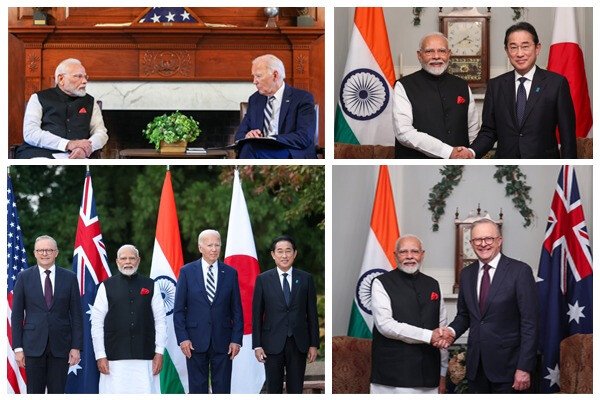By: Shashanka Das
“Cleanliness is not just about removing dirt. It is about removing the mindset that permits it to thrive.” These words, spoken by Prime Minister Narendra Modi, resonate deeply with the transformative journey that India embarked upon in 2014 through the Swachh Bharat Mission (SBM). This bold initiative, aimed at fostering cleanliness, health, and hygiene across the country, has indeed transcended its initial goals, shaping a new India where cleanliness is no longer a mere obligation but a collective consciousness. As we reflect upon a decade of progress, it becomes evident that the SBM has profoundly altered the nation’s public health landscape, livelihood dynamics, and societal mindset, making it an emblem of holistic development.
In 2014, India took a collective pledge to end open defecation and promote sanitation through SBM. This monumental task was approached with clarity of vision, guided by the belief that a clean India would lead to a healthier and more prosperous society. The numbers testify to this resolve—over 110 million toilets were constructed in the first phase of the mission, providing much-needed sanitation infrastructure in both rural and urban areas. Yet, the success of SBM cannot simply be measured in the number of toilets built. As Prime Minister Modi emphasized, this campaign sought to change the behavior of millions, aiming for a permanent shift towards cleanliness as a way of life.
The health benefits derived from SBM have been profound. Studies, including one published in ‘Nature’, estimate that the program has prevented 60,000–70,000 infant deaths annually since its inception. By reducing the spread of waterborne diseases, improving sanitation infrastructure, and promoting personal hygiene, the mission has contributed to a significant drop in morbidity and mortality rates in both rural and urban areas. Furthermore, the World Health Organization projects that by 2025, an additional 677.3 million Indians will benefit from improved health and well-being, underscoring the long-term impact of this nationwide initiative.
However, the benefits of SBM stretch far beyond health. This movement has sparked economic growth by creating vast employment opportunities, particularly in its early years. The construction of sanitation infrastructure alone employed 2.59 million full-time workers and provided indirect employment to 4.95 million more. More importantly, it empowered women, notably through the rise of ‘Rani Mistries’, female masons who became instrumental in building toilets under the program. This shift not only offered women a new source of income but also reshaped gender dynamics in many rural communities.
Phase two of SBM marked a transition from merely constructing toilets to focusing on sustainable waste management. This shift has fueled the growth of India’s waste management industry, generating jobs in waste collection, transportation, processing, and recycling. Women, once again, have played a pivotal role in this transformation. Through self-help groups (SHGs), women have led the charge in waste management initiatives, educating their communities about waste segregation and transforming waste into valuable products. One particularly inspiring initiative, the Light House Initiative (LHI), exemplifies this shift. Under LHI, women-led SHGs have turned multi-layered plastic waste into fashionable items such as tote bags and planters, simultaneously promoting sustainability and providing livelihoods for vulnerable communities.
These innovative solutions exemplify how the Swachh Bharat Mission is not merely about cleanliness; it is a powerful tool for community empowerment and economic growth. The efforts to mainstream marginalized waste workers through initiatives like the Plastic Circularity project demonstrate how SBM is contributing to India’s broader goals of sustainable development. By providing workers with training, capacity building, and access to funding, these initiatives are helping integrate them into the formal waste value chain, thus providing them with new avenues for growth and financial stability.
The ripple effects of SBM are also visible in its alignment with international development goals. In the global context, SBM’s goals dovetail with the United Nations Sustainable Development Goal (SDG) 6, particularly target 6.2, which calls for universal access to sanitation and hygiene. By working towards this target, India is not only improving the lives of its citizens but also contributing to the global effort to ensure clean water and sanitation for all by 2030.
As India commemorates the tenth anniversary of SBM on October 2, 2024, it is essential to recognize the profound cultural shift that this campaign has inspired. What began as a mission to eliminate open defecation and improve sanitation has evolved into a movement that has redefined public behavior. Cleanliness is now seen as a shared responsibility, a collective commitment that has united millions of Indians in their pursuit of a healthier and more dignified life. This participatory approach is exemplified in the annual cleanliness drives, where citizens from all walks of life, including notable figures, contribute their time and efforts to maintain cleanliness in their localities.
Moreover, the SBM has also had an undeniable impact on India’s image as a tourist destination. Cleanliness is a crucial factor in attracting tourists, and by promoting hygiene and sanitation, India has taken significant steps toward becoming a more welcoming and appealing destination for international travelers. This focus on cleanliness, combined with initiatives aimed at enhancing green spaces through tree planting and waste elimination, has the potential to further elevate India’s standing on the global stage.
Despite its many successes, challenges remain. In rural areas, for example, some individuals continue to resist using the toilets built under SBM, and the government has faced criticism for employing coercive measures to enforce toilet usage. Yet, these challenges only underscore the importance of sustained efforts to change long-entrenched behaviors. The SBM’s shift towards a focus on waste management and sustainability in Phase 2 is recognition that true change takes time and requires a long-term commitment to education and behavioral transformation.
Looking ahead, the future of SBM lies in its ability to continue adapting to new challenges and opportunities. The program’s success has laid the groundwork for further innovation in sanitation and waste management, and as the government continues to invest in these areas, the potential for job creation and economic growth remains vast. With the convergence of schemes like the National Skill Development Mission and the National Rural Livelihoods Mission, SBM is well-positioned to drive India’s development agenda forward.
The Swachh Bharat Mission has not only transformed India’s sanitation landscape but also become a powerful engine for societal and economic change. By focusing on long-term behavioral change and sustainable development, SBM has provided a blueprint for improving health, livelihoods, and environmental sustainability. As India celebrates a decade of SBM, the mission stands as a testament to the nation’s commitment to cleanliness and its vision for a healthier, more prosperous future. The road ahead is filled with challenges, but with continued dedication and innovation, the dream of a Swachh Bharat remains within reach. (The author can be reached at shashankadasnov1@gmail.com or 9706619975)











